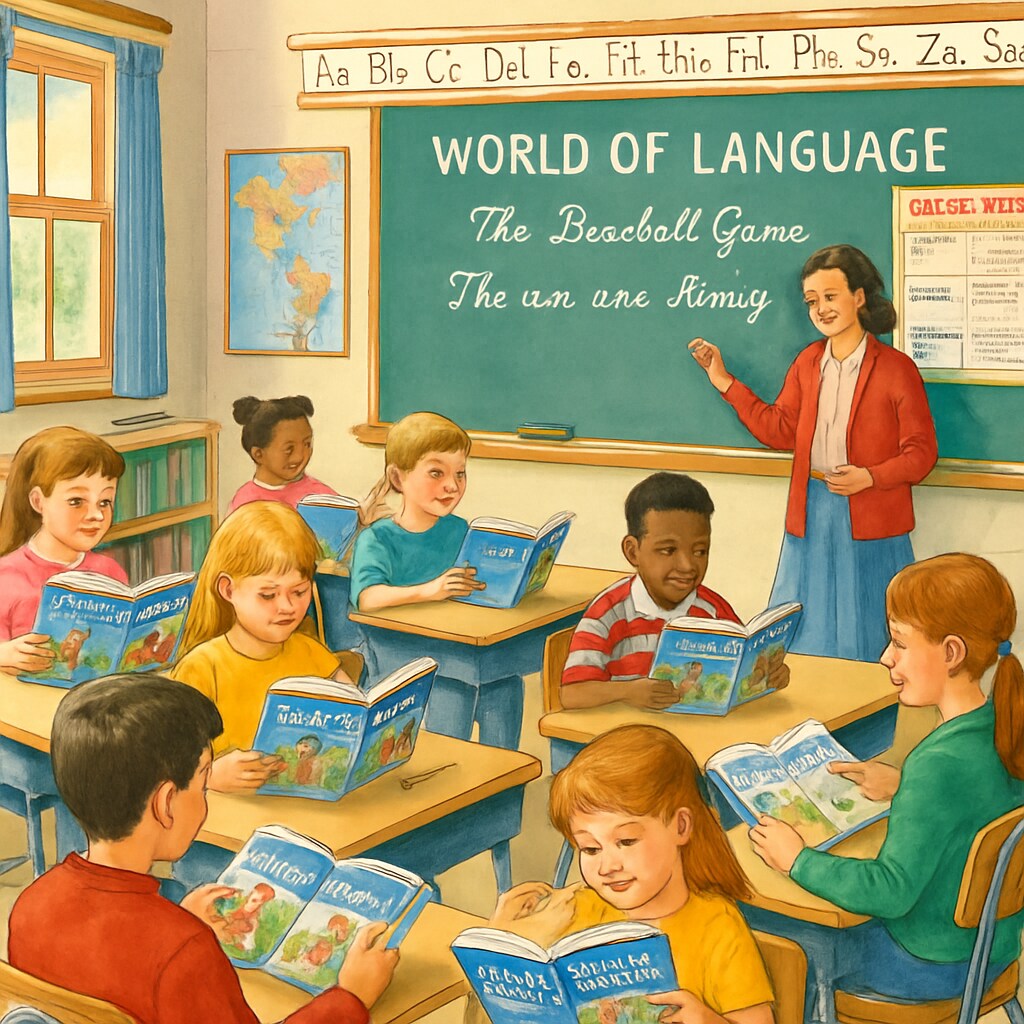The *World of Language* textbook, a staple of elementary language curricula in the 80s and 90s, holds a special place in the hearts of many educators and students. This iconic book, often recognized by its charming cover featuring a playful cat, was not just a tool for teaching grammar and vocabulary—it was a gateway to a world of storytelling, creativity, and critical thinking. In this article, we will revisit the textbook’s unique teaching methodologies, evaluate its impact on language education, and reflect on what modern curricula can learn from this beloved resource.
A Pioneer in Language Education: What Made *World of Language* Unique?
The *World of Language* series distinguished itself through its innovative approach to language instruction. Unlike traditional textbooks that focused solely on rote memorization, this curriculum incorporated storytelling, interactive exercises, and visual aids to make learning both engaging and effective. It emphasized the practical application of language skills, encouraging students to think critically and express themselves creatively.
Key aspects of its teaching methodology included:
- Integration of storytelling: Each chapter featured stories with rich, relatable characters, helping students connect emotionally with the content.
- Interactive activities: Exercises such as group discussions, role-playing, and creative writing fostered collaboration and deeper understanding.
- Focus on functional language: Lessons were designed to teach students how to use language effectively in real-world situations.

The Impact of *World of Language* on a Generation
The textbook’s influence extended far beyond the classroom. For many students, it provided a strong foundation in grammar, vocabulary, and reading comprehension while sparking a lifelong love for language and literature. Its holistic approach to teaching language skills made it a favorite among educators who sought to nurture both academic abilities and personal development.
Moreover, the series encouraged cultural awareness and empathy, as many of its stories featured diverse characters and perspectives. This focus on inclusivity was ahead of its time, preparing students to communicate effectively in an increasingly interconnected world.

Lessons for Modern Language Curricula
Despite its success, *World of Language* eventually faded from mainstream use, replaced by newer educational materials. However, its legacy offers valuable lessons for today’s language education. Modern curricula often prioritize standardized testing and digital tools, sometimes at the expense of creativity and emotional engagement.
To recapture the magic of *World of Language*, educators might consider incorporating the following elements:
- Storytelling as a teaching tool: Narrative-driven lessons can help students retain information more effectively.
- Interactive learning experiences: Activities that encourage teamwork and problem-solving foster both academic and social skills.
- Focus on cultural diversity: Introducing students to diverse perspectives nurtures empathy and global awareness.
As education evolves, it’s essential to strike a balance between technological innovation and the timeless principles that made resources like *World of Language* so impactful.
Conclusion: Revisiting the Legacy of *World of Language*
The *World of Language* textbook remains a shining example of what language education can achieve when it combines creativity, practicality, and emotional connection. While modern curricula offer new tools and techniques, they can still learn much from the foundational values that guided this beloved resource. By revisiting its legacy, educators can rediscover ways to inspire and empower the next generation of learners.
For those who remember the joyful experience of flipping through its pages, *World of Language* is more than a textbook—it’s a reminder of the profound impact effective teaching can have on young minds.
Readability guidance: This article uses concise paragraphs, interactive lists, and smooth transitions to enhance readability. It avoids overly technical language while maintaining a professional tone.


